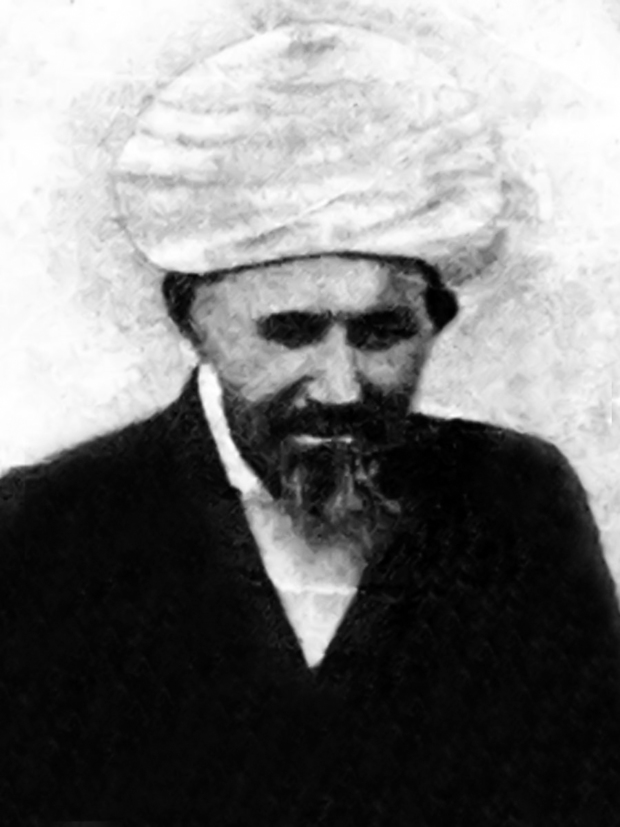‘Enriched Tatar entrepreneurs started to bribe the officialdom’
About where the pre-revolutionary billionaires from Tatar Forbes list come from
The book 'Sluzhilaya Ura: the birth of Tatar capitalism' is about to come to light in Kazan. In the author Radik Salikhov's opinion, the deputy director of Shigabutdin Mardjani Institute of History of the Academy of Science of the Republic of Tatarstan, the Tatar entrepreneurship originated in the 18th century. Tatar merchants and industrialists occupied a noticeable niche in the economy of the country. He told about it in an exclusive interview with a correspondent of Realnoe Vremya.
Industrial village
Mr. Salikhov, your book 'Sluzhilaya Ura: birth of Tatar capitalism' is about to come out. What is it about?
This book will come out within some weeks. It is dedicated to the phenomenon of Tatar capitalism that appeared as early as 18th century. According to sources, the largest industrial enterprises of that period emerged in Tatar village. We are speaking about such a phenomenon as 'industrial' villages. They were mainly situated on the territory beyond Kazan – today's Arsk, Atna and Vysokogorsky Districts.
It was founded by ordinary peasants who mainly were descendants of Golden Horde Beks and Mirzas.
Sluzhilaya Ura is a pre-revolutionary name of Nizhnyaya Ura village of Arsk District of Tatarstan. It is a place where the tendencies of the emerging capitalistic relationships manifested themselves.
Nevertheless, they were not just ordinary peasants…
They were not. At that moment, they were the representatives of service class people or Serving Tatars. When the Khanate of Kazan became a part of the Russian government, they became just state peasants. But many of them remembered their descent in the tenth generation, and somebody knew all relatives up to 12th century. It is obvious these peasants, who had such a noble family tree (shezhere), had a heritable capital. They managed to invest money in industrial production in the latter half of the 18th century, during the period of reforms instituted by Catherine the Great.
Several industrial sectors formed at once. First of all, it was textiles, so-called kumach production for making high-quality red calico. This textile was the most popular material in Russia at that moment. The people liked shirts, dresses and headscarves made of kumach. These clothes were a part of the everyday culture.
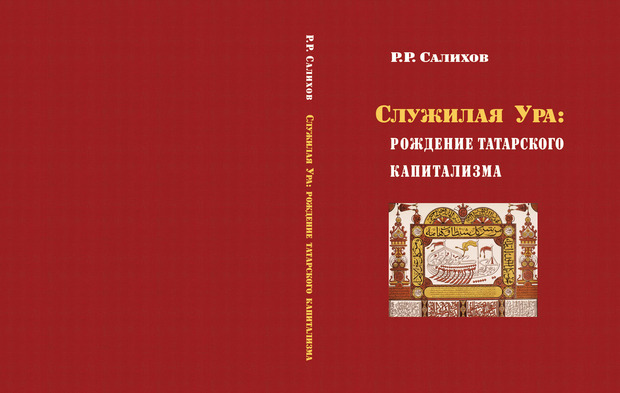
This book will come out within some weeks. It is dedicated to the phenomenon of Tatar capitalism that appeared as early as 18th century. According to sources, the largest industrial enterprises of that period emerged in Tatar village. We are speaking about such a phenomenon as 'industrial' villages.
At the beginning of the 19th century, only one Tatar village in Arsk District produced almost a half of rec calico in all Russian Empire. It means that one Tatar village factually dressed a half of the country. This village is Nizhnyaya Ura in Arsk District.
Now it is a small and calm village. When we started to study the history of settlements of Tatarstan, we saw the richness of the past of this aul. Gravestones of the local cemetery date back to the era of the Khanate of Kazan.
The population consists of the descendants of the so-called Arsk knyazs (princes) – Nukrat (Karin) Tatars. The Russian tsar gave them parcels for steady-going service and participation in military campaigns. These Tatars' family tree originate from legendary Kara Bek and Bahcman Sultan, who was the khan of Polovetsk.
Several sectors appeared at once in this village: textiles, chemical industry (potash, colourants) and production of writing paper. This paper was sold in Middle Asia and on domestic markets of Russia.
The most important thing is that they carried out large-scale commercial transactions between Russia and countries of the East.
Tatar Forbes
Was it possible to improve their stratum?
It was not necessary. They already started to deal with trade and factories, so, they belonged to merchant class. It offered concessions and privileges. This class differed from peasants. If they became poorer and did not belong to merchant class, they belonged to lower middle class of the District. This is why there were many merchants and bourgeois among peasants in the industrial and commercial Tatar village. For instance, Sluzhilaya Ura had over 40 families of guild merchants and tens of lower middle class families.
What surnames of Tatar merchants were the richest?
There were many rich merchants. In Kazan, they are the Apanaevs. Badretdin Apanaev is a millionaire, commissionaire who dealt with buyout and sale of raw animal material. The mansion on Yunus Square belonged to him.
For instance, Iskhak and Ibragim Yunusov brothers in the middle of the 19th century. They were the only people in the Tatar world who were awarded the title of Commercial Councilor. It was granted by the Emperor and practically equalized the title owner to the nobility.
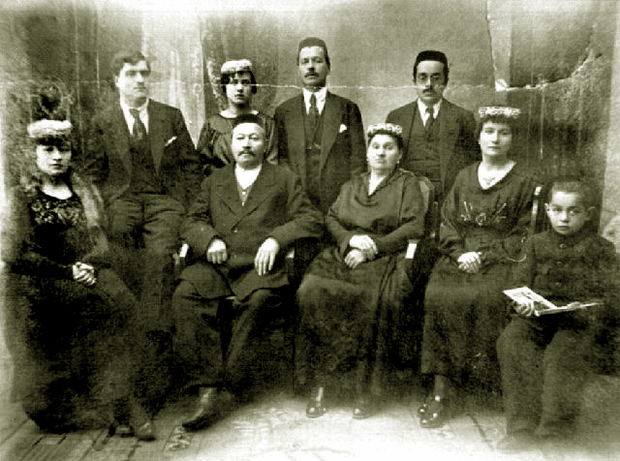
'There were many rich merchants. In Kazan, they are the Apanaevs. Badretdin Apanaev is a millionaire, commissionaire who dealt with buyout and sale of raw animal material. The mansion on Yunus Square belonged to him.' Photo: nik-rech.narod.ru
In Orenburg, the Khusainov brothers, of course: Akhmet Bay, Gani Bay, Makhmud Bay. They made a fortune from nothing saving every kopek and every ruble. By the 20th century, they gathered several millions of rubles, then divided it and each of them ran his own business.
The Ramiev brothers were owners of golden mines, one of the richest entrepreneurs, benefactors who supported poets, writers and the national press.
In Ufa, Abdulatif Khakimov – a Tatar merchant who built the famous Khakim Mosque. Sadtretdin Nazitov is also one of the trustees and builders of Galiya madrasa, merchant prince sold bread and textile who came from peasants of Kazan Uyezd and many other people.
Intermediaries between Russia and the East
Am I correct saying that the Tatar bourgeoisie started to form from the middle of the 18th century?
You are, but it doesn't mean that the Tatars did not have any developed trade before. The thing is that we have few sources on Middle Ages. We should understand that the capitalistic economy of Tatars would not appear from nothing in the middle of the 18th century.
Did the government reforms of Peter the Great give a fillip?
The Tatars' links with the East, especially with Middle Asia, never ceased before Peter the Great too. They existed before the Khanate and after. What was the strong point of Tatar entrepreneurs? They were intermediaries between Russia and the East. It was both in the 17th and 18th centuries.
An especial scale was seen under Catherine the Great's rule, who deliberately started to invite Tatars to diplomatic state service, gave incentives to Tatar entrepreneurs, adopted a law on religious tolerance and permitted to build mosques.
Could you go into details concerning the use of Tatars in expansion of Russia towards the East, please?
The authority of the young Russian Empire was backed into a corner. Going to the East, they were on an unknown and at times very inimical territory where there were many nomads. There was a number of Middle Asian countries with fanatic rulers. People who would be intermediaries – diplomatic and economic – were necessary during the military and political advances of the Russian government.
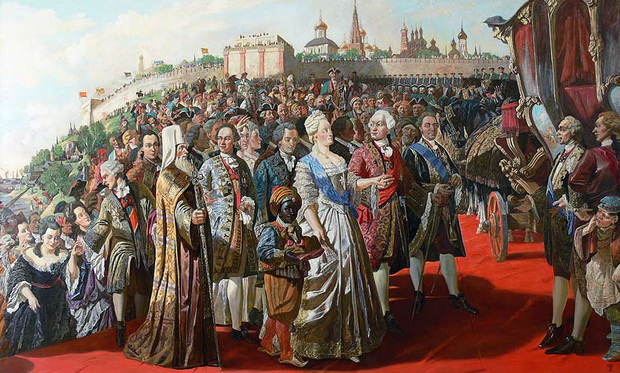
'An especial scale was seen under Catherine the Great's rule, who deliberately started to invite Tatars to diplomatic state service, gave incentives to Tatar entrepreneurs, adopted a law on religious tolerance and permitted to build mosques.''Catherine the Great' arrival to Kazan' by Ilyas Fayzullin (iske-kazan.ru)
The connection of the economy of Middle Asia and Kazakhstani steppe with the Russian market were more important than the very negotiations. In the beginning, they subdued the market of Middle Asia and Kazakhstan, and then these governments inevitably fell within Russia' orbit.
They depended on the Russian Empire. Russian raw material was delivered to Bukhara and Bukharan raw material was supplied to Russian factories. It was a united market, in fact, one government.
Did the Tatars probably have more credibility than the Russians?
Undoubtedly, they had the same religion, language, mentality. Tatars could easily come to an agreement and mend fences. Nevertheless, even they constantly were at risk: there were plundering inroads with human and big financial losses. However, despite a difficult situation, Tatar trade caravans kept going to the East.
Could you name the exported and imported articles Tatar merchants dealt with, please?
Livestock raw material and cattle was brought from there. And ready factory products, grains, bread, textile, instruments, mercery were sent there. Products produced in Russia and Europe was delivered to Kazakhstan and Middle Asia via Tatar merchants.
Materials, cotton, colourants, fruits and spices were from Middle Asia. Raw material for tanneries and soap factories were delivered. Flocks of sheep, cattle and horses were massively driven from Kazakhstani steppes. Here they were dressed, delivered to markets.
Tannery was especially developed in Kazan. Tatars and Russian dedicated themselves to this work. The Alafuzovs industrial giant appeared on the basis of tanneries. The largest soap makers were in Kazan. The Krestovnikov brothers concern emerged here.
In fact, Tatar entrepreneurs consecutively created a Eurasian market.

Drang nach…
Were there any links with Europe?
The links with Europe started to strengthen at the beginning of the 20th century when Bokharan markets lost their popularity. In addition, there was a change in mind, and the Tatars directed their views towards the West. Akhmet Khusainov tried to sell his goods in London and Germany for a reason. The Kazakovs, merchants, had their own offices in Berlin, that is to say, the Tatar capital started to penetrate this destination too.
Goods of animal origin, grains, raw material, mainly livestock raw material (coat), were sent to Europe. At that moment, our national business was closely connected with animal husbandry and crafts.
Looking at many villages today, we see that people don't have work, soil is poor. They earn make money from animal husbandry, sale of milk, meat, fur, etc. It is the foundation of the entrepreneurship that had been existing. And now this historic traditional regenerates, often absolutely independently of the government.
Topic of Halal from Far Far Away Kingdom
What were the main sectors of industry of the Tatar bourgeoisie?
Textiles of Tatars developed from the end of the 18th century till the 70s of the 19th century.
Then during the Industrial Revolution, due to the lack of the modern system of education, available instruments and resources, traditional sectors of textile production massively failed. Tatar entrepreneurs had been rearranging for 30-40 years. New industrial establishments, which corresponded to the level of Russia and Europe, were erected.
But when textiles weakened, commerce took the lead. Groceries and bread shops, textile sales held the lead. So, textiles, agriculture, soap production were at the top.
Tatar merchants satisfied other needs of Muslims – religious literature, Halal food, Muslim clothes, merchandises, creation of madrasas. According to our calculations, 30% of Tatar entrepreneurs dealt with national and religious necessities of Tatars. In this respect, no one could compete with them.
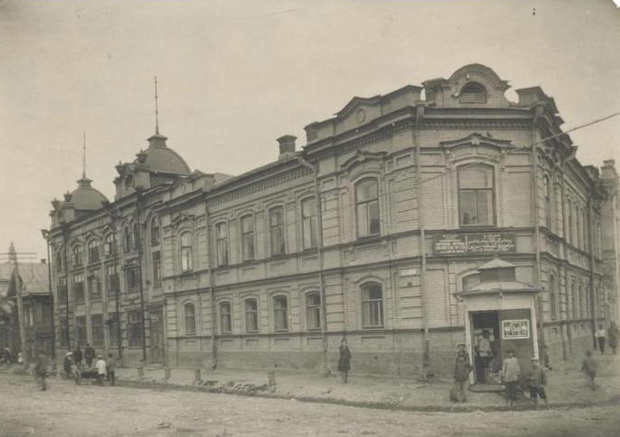
'The Kasimov brothers' printer also had the most modern machine tools and best types in Russia. The publishers published 10,000 copies of books. They cemented the leading position on Tatar book market.' Photo: goskatalog.ru
The renascence of the modern Tatar industry happened at the beginning of the 20th century when soap making factory of Iskhak Arslanov was created in Kazan. This enterprise was equipped according to the latest thing in technology of that time. It had several shops, workers were well paid. There was a marketing and an advertising campaign. Arslan soaps were produced there, which was used throughout the country.
The Kasimov brothers' printer also had the most modern machine tools and best types in Russia. The publishers published 10,000 copies of books. They cemented the leading position on Tatar book market.
It is very important that before the revolution Tatar entrepreneurs started to study themselves and send their workers to Europe to learn new technologies and new equipment.
New outlook – new forms of commerce
In other words, when the era of Jadidism came?
Naturally, it is a product of Jadidism. We closely link the renascence of the entrepreneurial spirit with Jadidism. The industrial and cultural and spiritual life developed simultaneously.
Tatars merchants started to use new forms of commercial transactions. It happened against a background of the changing outlook.
They actively began to work in the banking sector though it is forbidden in Islam. Four Tatars-Muslims worked in the Loan and Discount Committee of the Kazan Department of the State Bank. They decided to approve or not loan applications, which numbered tens and hundreds. And how many applications of Muslims did they consider!
Merchants from Troitsk addressed a question to Zaynulla Rasulev: 'We, Muslims, break commandments using rated loans (riba). What should we do?' He answered that, 'If you don't use this instrument, you business will die. If business dies, nation will also die'. The answer was to use it.
'Merchants from Troitsk addressed a question to Zaynulla Rasulev: 'We, Muslims, break commandments using rated loans (riba). What should we do?' Photo: wikimedia.org (Zaynulla Rasulev – a Bashkir religious scholar, Ishan)
Tatar economic journals appeared at that time. For instance, Economy (Iqtisad). There was a renascence of the economic thought and entrepreneurship.
We observe a mass charity for Tatar needs exactly during this period. For example, Ramiev, who published Wakyt (Time) all-national newspaper, was at losses because of it. But he continued publishing it.
'Officialdom was bribed with pleasure'
Were Tatar merchants from Kazan different from the merchants from Orenburg, Troitsk or Ufa?
No, there were not. The merchants from Orenburg and Troitsk came from the territory beyond Kazan. It was a united Tatar world. They all were related with each other – Kazan, Nizhny Novgorod, Kasim. There were the closest family ties.
Were there such people among the Tatars who developed their business due to their closeness to the authority?
No. They had nothing to do with the authority. Another topic is that the enriched Tatar entrepreneurs started to bribe the officialdom that accepted their gifts with pleasure. These functionaries helped them to do everything in the fight with rivals. Corruption existed.
It was done on their own initiative. All fortunes were made from scratch thanks to people's hard labour, skills and wit. When they became rich, they strengthened their position, made friends with governors, mayors, presented gifts and invited them to their place.
No comparison with Moscow magnates
Could you tell about the relationships of Tatar and Jewish bourgeois?
Tatars had very close relationships with Jew by the beginning of the 10th century. They worked almost in the same sectors. For instance, Jewish and Tatar merchants of Kazan did dirty work with livestock raw material – guts, horns, coat: mud, smells, dressed carcass on yards. Jewish merchants created joint enterprises with Tatars and even settled in Tatar Sloboda.
Mordekhay Glikin's famour tannery was situated on Kayum Nasyri Street in front of Apanaev Mosque.
Both people were turned out in some measure. They had a stimulus and common aspirations. They did not have any conflicts.

'According to my estimations, all turnover of commercial and industrial enterprises of Stary Tatar and Novy Tatar Sloboda was two times less than one textile factory of Konshinin Moscow.' Photo: blog.muzeino.ru
What share did Tatars account for in Russia?
It was miserable. But it does not mean that their contribution was small. According to my estimations, all turnover of commercial and industrial enterprises of Stary Tatar and Novy Tatar Sloboda was two times less than one textile factory of Konshin in Moscow. In other words, a 19m rubles annual turnover against 38m rubles. One factory against 500 small enterprises of Kazan. But Tatar establishment were an important factor of cooperation ties in Russia.
'First of all, entrepreneurs are ripped off'
How did the Tatar bourgeoisie go through the February and October Revolutions?
As well as the whole country. Mane people stayed here, some people departed. All the existing social and economic system was destroyed. Old-fashioned entrepreneurship disappeared during the first years of the Soviet authority and the Civil War.
First of all, entrepreneurs and rich people were ripped off. There was a mass expropriation and summary execution, class ideology then. The majority of the entrepreneurs went to the East – China, Japan; many people emigrated to Turkey. Somebody went to Middle Asia. Over a million Tatars-descendants of rich families and priestesses' families lived there. They were not disturbed there.
Did the descendants of the bourgeoisie stay in Russia? What do they do?
Yes, many of them live in Kazan. There are many Apanaevs. The majority of their descendants work in culture, science and medicine.
Did the continuity of generations break?
It did. In our case, for ideological reasons. In general, it is an inevitable process. In history, commercial and industrial dynasties last three generations. They leave the stage and are replaced by others. If somebody made a fortune due to a hard work, his children probably would keep doing this activity, but grandchildren do what they want when they have this money. It is one law in the whole world.
Reference
Radik Salikhov – historian, deputy director on scientific work of the Mardjani Institute of History
